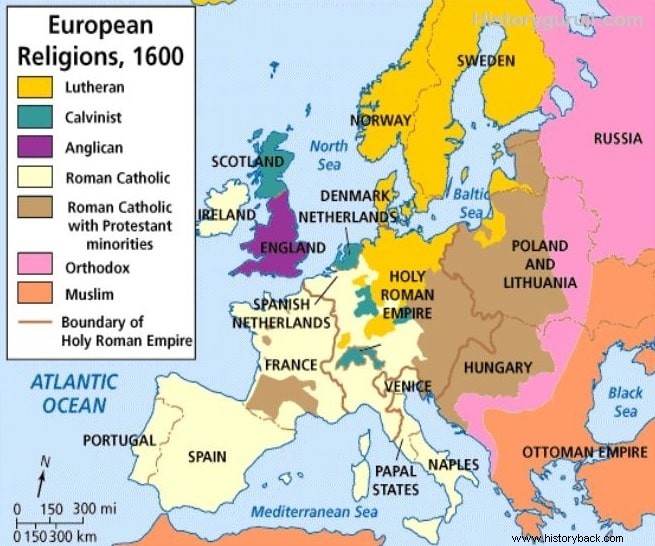
The Rebellious Reformation of the 16th Century Concerned about the spread of Protestantism, the followers of Catholicism made a number of reforms in Catholicism in order to secure the power and authority of the Catholic Church and the papacy and to reinforce their authority, known as the 'Anti-Reformation Movement' or 'Anti-Reformation Movement'. Protestant Reformation Movement. This movement began in the city of Trent from the 19th Church (1545-1563 v) in which apart from the new organization of the church, especially the teaching of ordinary priests, it started until the end of the Thirty Years' War (1648 AD). Keep going The aim of this counter-reformation movement was to restore holiness and its high ideals in the Catholic Church.
Measures to Stop Protestantism (Measures to Prevent Protestantism)
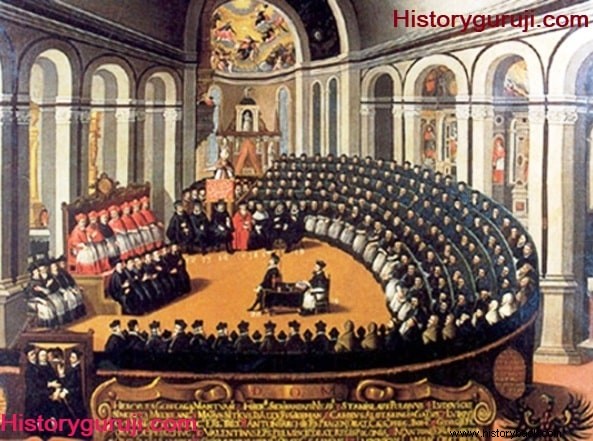
Long before Luther and Calvin's protests Loyal Roman Catholics called for reform of the Catholic Church. In Spain in the late 16th century, Cardinal Jimens stopped an expected Protestant uprising by imposing strict discipline among the clergy and fighting heresies. However, such reforms have not been attempted before in other countries of Europe. Now that states were becoming Protestant one after the other, the need for some strong measures was felt.
Two countermeasures were suggested to stop the flow of Protestantism. Venetian liberal Cardinal Contarini suggested compromise and reconciliation. The second suggestion came from Cardinal Gian Pietro Caraffa of Naples. Carafa believed that there was no need to compromise with Protestantism, but that the corrupt practices within the church should be stopped. He said that Protestants were heretics and that they would not be compromised unless they dedicate their supreme devotion to the Pope. Ultimately this ideology won and Gian Pietro Caraffa became the Pope of the Catholic Church under the name of Paul IV (1555-1559 AD).
The Synod of Trent, December 1545-1563 AD (Assembly of Trent, December 1545-1563 AD)
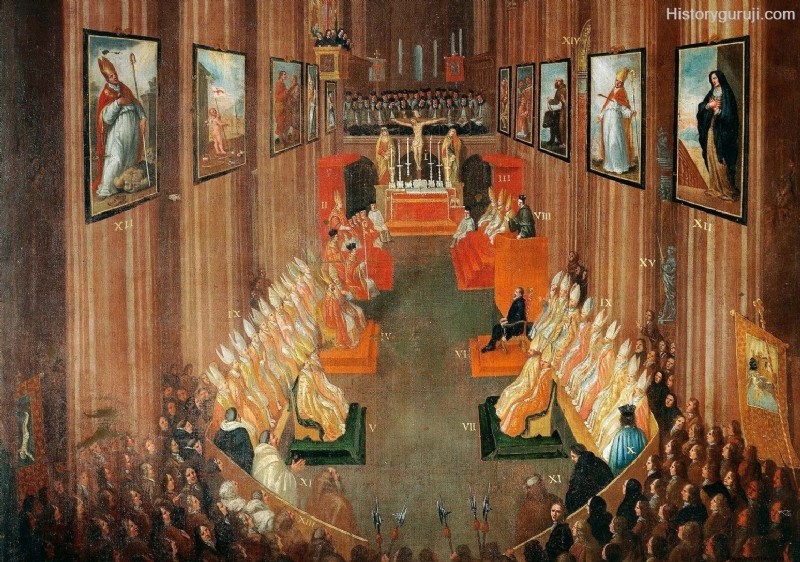
Emperor in Germany according to Pope Paul III's supporters Charles V organized a religious meeting in the city of Trent in northern Italy in December 1545 to reform the church. This meeting of Trent continued with some intervals from 1545 to 1563 AD. Eminent scholars of the Church participated in this meeting. This meeting was organized so that the defects of the church should be removed, efforts should be made to bring the Protestant people back to the church by removing the differences and unity should be established in the church. The purpose of this meeting was also that the principles of the Church should be clearly explained and discipline and morality should be established. The leaders of the Protestant denomination were also invited to the meeting, but they refused to participate in the meeting. Thus this assembly remained only a meeting of the Catholic Church and its purpose remained to reform the Catholic Church.
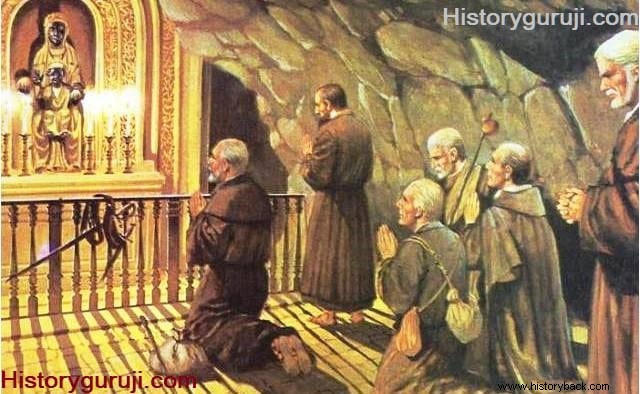
Catholic Church in the House of Trent for Reformation Two types of decisions were taken - in-principle decisions and reform-related decisions.
Principle Verdict
No change in the fundamental principles of the Church was accepted at the House of Trent. Only the Bible written in Latin language was accepted. It was clearly stated that only the Church has the right to interpret the Bible. Luther's doctrine of reverence and faith for salvation was considered to be wrong and the origin of the seven sacraments was said to be essential by telling Christ. Protestant interpretations were condemned, belief in miracles was expressed and the doctrine of the 'Last Supper' was affirmed. The Pope was accepted as the highest authority and universal lecturer of the Church.
correction decision
The sale of church posts was abolished in order to maintain church discipline, officials were instructed to avoid being comfortable while living an ideal life within their workspace . Arrangements were made for proper education and initiation of the priests. The language of religion remained Latin, but the use of vernacular languages was also permitted. The sale of apologies was stopped and the pecuniary benefits of clergy for sacramental works were banned. Now an officer could do only one job. A list of books that were wholly or partly anti-church was drawn up. Some books were banned outright and some were taken out and deemed readable. Thus the decisions of the House of Trent contributed significantly to the reorganization and counter-reformation of the Catholic Church.
Jesuit Union and Ignatius Loyla (Jesuit Union and St Ignatius of Loyola)
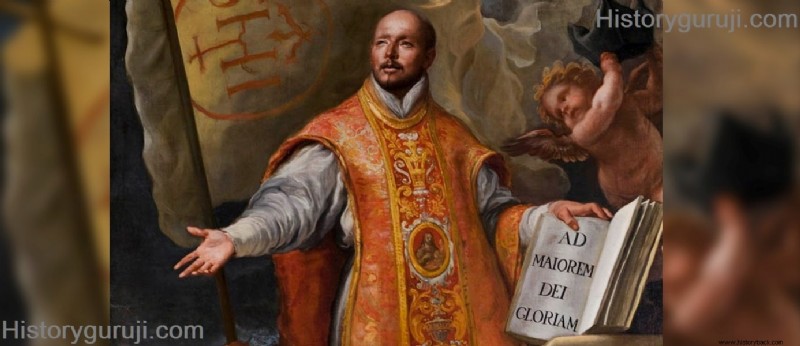
Proposals for religious congregations to reform Catholicism And decisions were not enough, but religious organizations were also needed to implement them. As a result, many religious associations were established in the second half of the sixteenth century. The most important and powerful of these religious organizations was the Federation of Jesus (Jesuit Union).
The founder of the Jesuit Federation was Ignatius Loyla (AD 1491-1556). Ignatius Loyla was a Spanish soldier who was wounded and lame in the Battle of Navarre in 1521. Wearing the clothes of a Catholic monk, he studied literature, philosophy and theology at the University of Paris for seven years for the accumulation of knowledge. In order to reorganize the church here, he founded the 'Society of Jesus' with his companions in the Church of St. Mary in 1534 AD. The members of this society became known as Jesuits.
The aim of the Society of Jesus was to serve the Catholic Church and Christianity, to propagate Catholicism and to lead a life of non-attachment, extravagance and holiness. The entire organization of the Society of Jesus was on military basis. Its head was called a general, who was appointed for life. Every member was bound under strict discipline. The same person could become a member of this institution, who had broken all his material relations. Each member had to take an oath of humility, purity, obedience and support to the Pope. There was an inherent aggression in this institution because Loyla knew it was a matter of life and death for the church. He prepared his followers not only for a holy life, but for the protection and propagation of the Church. Loyla created Spiritual Exercises to guide and inspire members of the Jesuit community.
Influenced by the devotion, devotion and selfless service of Ignatius Loyla and his companion Francis Xavier, Pope Paul III gave a letter of acceptance to this Jesuit union in 1540 AD, making it a part of the Catholic Church. Active union. During Akbar's reign, Jesuit priests had come to India for preaching and Francis Xavier had stayed in Akbar's court. By the middle of the seventeenth century, by the efforts of the Jesuit priests, Catholicism was re-established in Italy, France, Spain, Poland, the Netherlands, southern Germany, Hungary, etc. countries.
Religious Court (Inquisition)
Religious courts called Inquisitions were established in various countries with the special cooperation of Jesuit clergy and church officials to block the progress of Protestant religion. Jesuit clergy and priests had a special hand in their establishment and activities. This exclusive religious court was revived in 1552 AD by Pope Paul III in Rome. This court used to find atheists, give them the harshest punishment, forcefully enforce the principles of the Catholic Church, ruthlessly crush the opponents of Catholicism, hear appeals from other countries in the cases of religion, etc. Against Protestants, this court awarded a large number of death sentences and burning alive.
Thus by the middle of the 16th century the Roman Catholic Reformation movement progressed greatly, creating renewed enthusiasm in the Church and launching counter-protests against Protestants. This strategy not only preserved half of Christendom for Roman Catholics, but also pushed back Protestantism.
Role of Rulers in Anti-Reformation Movement (Role of Rulers in Counter Reformation Movement)
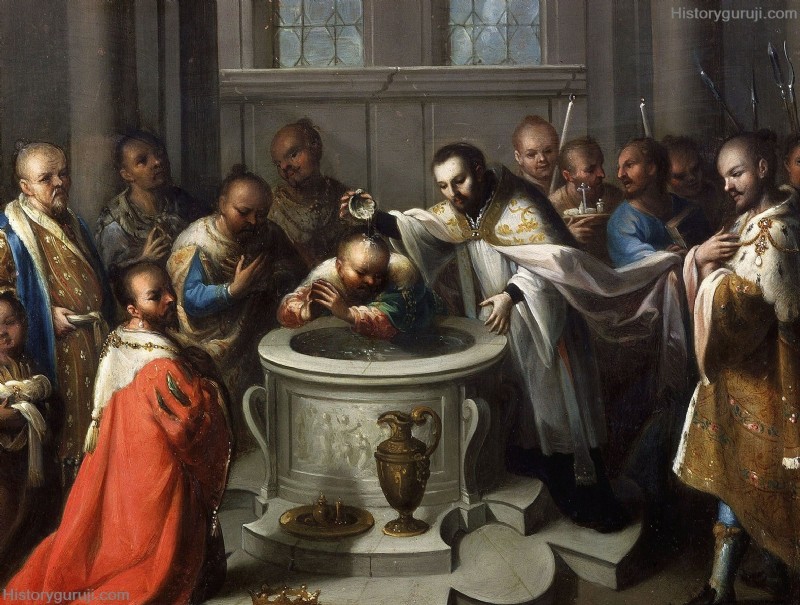
Spain was the world's greatest military power in the sixteenth century was considered. He was a staunch Roman Catholic. He considered the purpose of his life to restore the power of the Roman Catholic Church in Western Christendom through the power and splendor of Spain. Therefore, the Spanish ruler Philip II (1556-98 AD) was the most helpful in the revolt launched by the Roman Catholic Church against the Protestants. On the side of the Roman Catholics, Philip II exerted all of Spain's power against the Protestants in the Netherlands, England and France.
Reformation in the Netherlands
The southern (Belgium) provinces of the Netherlands were dominated by the Roman Catholic Church, but the northern (Dutch) provinces were dominated by Calvinism. Philip II took strong steps to end Dutch Protestantism. He introduced the Inquisition to enforce a law against heresy and created twelve new Roman Catholic bishops. In 1566 AD, 400 prominent nobles of the Netherlands presented a table of their demands to Louis Philippe. When none of their demands were met, the Protestants began to disfigure the Roman Catholic Church. On this Philip sent ten thousand Spanish soldiers under the leadership of the Duke of Alva to suppress the Netherlands. For six years the reign of terror prevailed and thousands of Dutch were killed. But the Dutch took up arms instead of being afraid. Under the leadership of William of Orange, the Dutch began to attack Spanish communications and trade. In 1580 AD, the Dutch captured the Portuguese Empire in the eastern archipelago which was in the possession of Philip II.
Fearing the growing power of the northern Protestant states, the southern ten Roman provinces accepted Spain's patronage. However, the seven Calvinist northern provinces continued to struggle for their independence. In 1584 AD, William of Orange was assassinated. Finally, in 1609 AD, eleven years after Philip's death, Spain accepted a twelve-year suspension of the war, and in 1648, Spain recognized the full independence of the Dutch Netherlands. Thus, Philip II's crusade in the Netherlands was partially successful.
Reforms in England
Philip II's greatest effort in the field of the Crusades was the attempt to bring England within the Roman Catholic Church. He married Mary Tudor, the Roman Catholic queen of England. But this marriage and the murder of English Protestants put not only the Queen, but also the Roman Catholic Church, from the public eye of England. Again this marriage could not produce a Roman Catholic heir. When Mary Tudor died in 1558, Philip attempted to marry Mary's successor, Elizabeth, to maintain his influence in England. But Elizabeth was a visionary and a patriot. So he cleverly turned down Philip II's marriage proposal.
Seeing his plan fail, Philip plots to assassinate Elizabeth. The second claimant to the throne of England after Elizabeth was the Roman Catholic Mary Scott (1542–1587 AD), a princess of Scotland and married in France. Childless Mary returned to Scotland after the death of her husband Francis in 1560.
I myself was Catholic and my people were Protestant. The clever Mary married the Englishman Darnley in 1565 AD to strengthen his position. Mary did not give Darnley the king's rights and fell in love with the secretary, Rizzio. When Darnley got Rizio killed, Mary married Bathwell in 1567 AD after having Darnley murdered. Due to these events, the Calvinist people of Scotland revolted against Mary and took Mary captive. The sly Mary, taking advantage of her beauty, pretends to be in love with the jailer George Douglas and escapes from prison. Mary fled to England and asked for Elizabeth's help. The visionary and wise ruler Elizabeth put Mary under house arrest. Later, when Elizabeth learned that Mary Scott was also involved in the plot of her assassination by Philip II, Mary Scott (Stuart) was hanged on 8 February 1587.
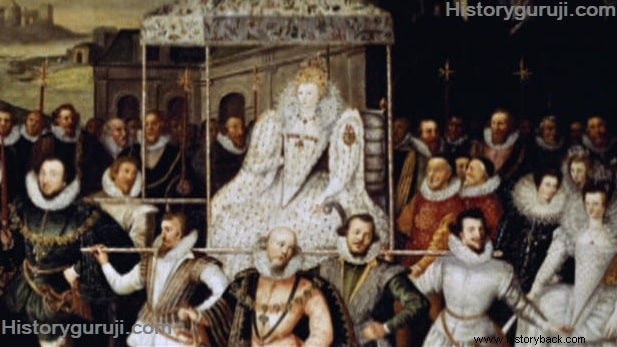
Meanwhile Elizabeth helps Dutch Protestant-opponents रही और अंग्रेज समुद्री लुटेरों को स्पेनी जहाजों को लूटने के लिए प्रोत्साहित करती रही। जब फिलिप द्वितीय को मेरी स्टुअर्ट की फाँसी का समाचार मिला, तो उसने अपने अजेय जहाजी बेड़े की सहायता से इंग्लैंड को जीतने का निर्णय लिया। परंतु 8 अगस्त 1588 ई. में इग्लैंड ने स्पेनी आर्मडा को ध्वस्त कर दिया। स्पेनी आर्मडा की पराजय के फलस्वरूप समुद्र पर इंग्लैंड का दबदबा कायम हो गया और इंग्लैंड से प्रोटेस्टेंटवाद को समाप्त करने का फिलिप द्वितीय का मंसूबा असफल हो गया।
